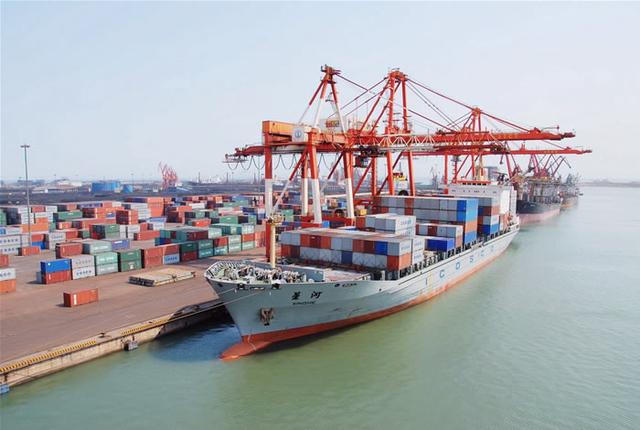
WORLDWIDE – Latest news from the World Ports Sustainability Program (WPSP), an initiative of the Japanese headquartered International Association of Ports and Harbors (IAPH), contains some interesting facts about ships movements, and delays, as they travel the globe moving around 90% of all the world's goods.
During its latest Taskforce Port Call Optimization meeting, one of the industry's leading AIS vessel tracking solutions provider MarineTraffic offered some sobering data. Now capable of measuring the entire port call process of different vessel types at berth level, they calculated time at anchorage outside ports around the globe of the 200,000 vessels they track averaging between just under 4% and over 9% of average call time.
With multiple pilot and roll out projects underway at leading world cargo ports such as Rotterdam, Antwerp, Hamburg and Los Angeles to optimise vessel port calls, the need for a standardised approach to data availability and sharing with ships calling at these ports is growing.
With this in mind the WPSP has submitted its Just-In-Time (JIT) Arrival guide to the International Maritime Organization (IMO) as an information paper for the next meeting of the IMO Maritime Environment Protection Committee (MEPC 75) at the end of March to support the IMO resolution that calls on cooperation between ports and shipping on the reduction of greenhouse gas (GHG) emissions from ships.
Optimisation of port calls corresponds with the four action lines of the IMO Resolution submitted last year on cooperation between ports and shipping on reduction of GHG emissions from ships. The resolution has been co-sponsored by a number of member governments, various shipping industry associations as well as the World Wildlife Fund.
The JIT Arrival Guide also follows the recent publication last year of the latest version of the Taskforce's Port Information Manual. The manual, developed over a five-year period by ship owners, ports, and other industry players in the Taskforce, is designed for application in all ports. It includes data definitions sourced from existing standards within the shipping and supply chain industry to allow nautical and operational systems to speak with one another optimally.
At the recent Taskforce meeting in Rotterdam, several existing port call optimisation solutions either in pilot phase or in full operation were showcased. One such solution has been developed by the Hamburg Vessel Coordination Center (HVCC). It is built on an existing platform which shares data between 300 different parties in the port community. This also including EDI links with ports such as Rotterdam where the approaching vessel made its previous call. synchronisation of nautical data with fleet support/control centres means that arrival of cruise and container ships along the berth side can be correctly scheduled and synchronised.
These kind of solutions are not being piloted in isolation. Other ports such as Algeciras, Houston and Felixstowe use the PortXchange solution, whilst a liquid bulk terminal is trialling the Qronoport system elsewhere in Antwerp. Captain Ben Van Scherpenzeel, Chair of Taskforce Port Call Optimization commented:
"Ship-shore data availability and data sharing around port calls must be supported by robust standards developed by robust organisations in the long run to make GHG emissions reductions a reality. Ship owner-operators will simply not be able to work optimally with different data sets amongst all the ports their fleets call at. Equally, a one-size-fits- all global solution is not the answer. The answer lies in a common port call process framework, using existing contractual, hydrographic, and data definition standards."
In early February, UNCTAD (the main UN body dealing with trade, investment and development issues) released its own report on this pressing issue with support on an industry level. These include Port CDM who were the architects behind the STM validation project, Intelligent Cargo Systems, the global data standards provider GS1, BIMCO, MSC, the Republic of Korea's Smart Navigation Projectand global intelligence provider IHS Markit.
The UNCTAD paper, entitled Digitalizing the Port Call Process, identifies the principal tensions and opportunities arising that are impacting the inevitable and ongoing digitalisation process that is underway in the maritime sector. It makes no bones about the main challenge:
"One of the dilemmas with digitalisation, standardisation and data sharing in the port operations environment is the absence of over-arching bodies like the IMO that can strongly influence standardisation. Tension also exists between catering for local requirements and sensitivities including existing infrastructure to overcome, and at the same time being able to enable those involved to connect and be connected to the world."
During the upcoming IAPH 2020 World Ports Conference in Antwerp next month, the panel session, ‘From Concept to Reality: How Ports Are Taking the Lead in Data Exchange for Port Call Optimisation’, will combine both Energy Transition and Data Collaboration Streams in one single session. Patrick Verhoeven, IAPH's Managing Director observed:
"Whilst it is not the ultimate game-changer, Port Call Optimisation definitely is one of the low-hanging fruits that will help decarbonising the maritime sector. Its multiple advantages include increased safety and efficiency, so there is really no excuse for stakeholders in the nautical chain why they should not to get involved and make it happen."
Source:handyshippingguide
The opinions expressed herein are the author's and not necessarily those of The OLO News.
Quality Companies